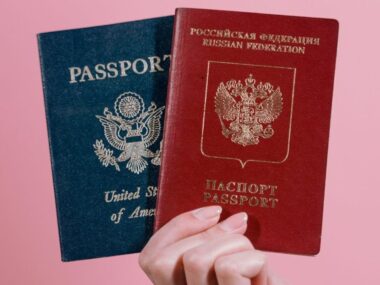The United States remains one of the most sought-after destinations for skilled professionals worldwide, offering vast career opportunities, competitive salaries, and exposure to cutting-edge industries. For many foreign workers, the H1B visa serves as a gateway to securing employment in the U.S., particularly in fields such as technology, finance, engineering, medicine, and research. However, obtaining an H1B visa is not a straightforward process—it requires sponsorship from a U.S. employer and involves multiple legal and procedural steps.
Understanding the H1B sponsorship process is crucial for foreign professionals aiming to work in the U.S. From securing a job offer and navigating the visa lottery to filing petitions and preparing for visa interviews, every step must be carefully executed to improve the chances of approval. In this detailed guide, we will walk you through the entire H1B sponsorship process, outlining eligibility requirements, key steps, associated costs, processing timelines, and potential challenges. Whether you are a foreign worker seeking sponsorship or an employer looking to hire global talent, this guide will provide valuable insights to help you successfully navigate the H1B visa journey.
Eligibility Requirements for H1B Sponsorship
To qualify for an H1B visa, both the foreign worker and the sponsoring employer must meet specific eligibility criteria. These requirements ensure that the job position is suitable for the H1B program and that the applicant possesses the necessary qualifications. Below is a detailed breakdown of the key eligibility requirements:
Job Position Requirements
The job offered by the U.S. employer must meet the definition of a specialty occupation, which means:
- The role requires theoretical and practical application of specialized knowledge.
- A minimum of a bachelor’s degree or higher (or its equivalent) is required in a specific field related to the job.
- The job duties are complex and cannot typically be performed by someone without a specialized degree.
Examples of Specialty Occupations:
- Information Technology (IT) professionals (software engineers, data analysts, cybersecurity experts)
- Engineers (mechanical, civil, electrical, software engineers)
- Financial analysts, accountants, and auditors
- Healthcare professionals (doctors, pharmacists, medical researchers)
- Scientists and researchers
- University professors and educators
If the job does not naturally require a degree, the employer must provide substantial evidence proving that the position is specialized and meets H1B criteria.
Employee (Foreign Worker) Requirements
For a foreign worker to qualify for H1B sponsorship, they must meet the following criteria:
Educational Qualifications
- The applicant must have at least a bachelor’s degree or higher in a field directly related to the job.
- If the degree was earned outside the U.S., it must be evaluated for equivalency by an accredited credential evaluation service.
- If the applicant does not have a formal degree, equivalent work experience may be considered (typically, three years of work experience equals one year of university education).
Professional Experience and Skills
- Relevant work experience in the specialty field is often required.
- Some industries may require professional certifications or licenses (e.g., lawyers, doctors, and accountants must meet state-specific licensing requirements).
Legal and Immigration Status
- The applicant must not have any legal issues that would disqualify them from obtaining a U.S. visa.
- If currently in the U.S. on another visa type (e.g., F1, OPT, L1, or H4), the applicant must ensure their transition to H1B status complies with immigration laws.
Employer (Sponsoring Company) Requirements
For a U.S. employer to sponsor an H1B visa applicant, they must fulfill the following conditions:
Legitimate Business Entity
- The employer must be a legally registered business in the U.S. (corporation, LLC, partnership, etc.).
- The company must have a valid Employer Identification Number (EIN).
Specialty Occupation Job Offer
- The employer must offer a job that meets the specialty occupation requirements outlined by USCIS.
- The job description must clearly state the required degree, specialized skills, and job responsibilities.
Ability to Pay the Required Salary (Prevailing Wage)
- The employer must agree to pay the foreign worker at least the prevailing wage for the job position and location, as determined by the U.S. Department of Labor (DOL).
- Employers must file a Labor Condition Application (LCA) to certify that hiring a foreign worker will not negatively impact the wages and working conditions of U.S. employees.
Compliance with H1B Regulations
- The employer must comply with all H1B sponsorship regulations, including maintaining proper documentation and informing USCIS of any job changes.
- Employers must not discriminate against U.S. workers or use H1B sponsorship to replace American employees unfairly.
H1B Visa Cap Considerations
- The H1B visa is capped at 65,000 visas per year, with an additional 20,000 visas available for applicants with a U.S. master’s degree or higher.
- Some employers, such as universities, non-profit research institutions, and government organizations, are exempt from the cap and can sponsor H1B employees at any time.
Step-by-Step Process of H1B Sponsorship
The H1B sponsorship process involves several critical steps that both the U.S. employer and the foreign worker must follow to ensure a successful visa application. This process includes obtaining job sponsorship, filing petitions, going through the lottery (if applicable), and attending a visa interview. Below is a detailed, step-by-step guide to the H1B sponsorship process:
Secure a Job Offer from a U.S. Employer
The first step in obtaining an H1B visa is finding a U.S. employer willing to sponsor you. Since foreign workers cannot apply for an H1B visa on their own, a valid job offer from a sponsoring employer is required.
How to Find an H1B Sponsor:
- Target H1B-friendly companies: Look for companies that frequently hire foreign workers. You can check the H1B Employer Database to find companies with a history of H1B sponsorship.
- Apply for jobs in specialty occupations: Ensure that the job matches your educational background and skills.
- Leverage networking: Connect with professionals in your field and explore job opportunities through LinkedIn, job fairs, and recruitment agencies.
- Consider cap-exempt employers: Some organizations, such as universities, non-profits, and research institutions, are not subject to the H1B visa cap and can sponsor workers anytime.
Employer Files a Labor Condition Application (LCA) with the Department of Labor (DOL)
Once a U.S. employer agrees to sponsor an H1B worker, they must file a Labor Condition Application (LCA) with the Department of Labor (DOL). The purpose of the LCA is to ensure:
- The foreign worker will be paid at least the prevailing wage for the job location.
- The hiring of a foreign worker will not negatively affect the wages and working conditions of U.S. workers.
- The employer commits to complying with U.S. labor laws regarding H1B workers.
Key Points About the LCA Filing:
- Filed using Form ETA-9035 through the FLAG (Foreign Labor Application Gateway) system.
- The employer must post notices at the work location to inform employees about hiring an H1B worker.
- Processing Time: 7–10 business days.
- The approved LCA is required for the next step in the H1B process.
Employer Files Form I-129 (H1B Petition) with USCIS
Once the LCA is approved, the employer files Form I-129 (Petition for a Nonimmigrant Worker) with U.S. Citizenship and Immigration Services (USCIS). This is the official application requesting the U.S. government to grant H1B status to the foreign worker.
Documents Required for Form I-129 Filing:
- Approved LCA
- Job offer letter with detailed job description and salary information
- Proof that the job qualifies as a specialty occupation
- Copies of the foreign worker’s passport and educational qualifications (degree certificates, transcripts, credential evaluations if applicable)
- Evidence of the employer’s legitimacy (tax documents, company registration details, etc.)
Processing Time for Form I-129:
- Regular Processing: 2 to 6 months
- Premium Processing (Optional): 15 days (for an additional fee of $2,805)
H1B Visa Lottery (If Applicable)
Each year, USCIS places a cap on the number of H1B visas issued:
- Regular Cap: 65,000 visas
- Master’s Cap: An additional 20,000 visas for applicants who hold a U.S. master’s degree or higher
Lottery Process:
- Electronic Registration: Employers must submit an online registration for each H1B candidate during the H1B lottery period (typically in March).
- Random Selection: If the number of registrations exceeds the cap, USCIS conducts a random lottery.
- Lottery Results: Selected applicants will be notified in March or April and can proceed with their petition.
Who is Exempt from the H1B Cap?
- H1B petitions filed by universities, research institutions, and government organizations.
- Individuals seeking H1B transfers or extensions.
USCIS Processing and Approval of the H1B Petition
If the applicant is selected in the lottery (or is exempt from it), USCIS will review the Form I-129 petition. USCIS may:
- Approve the petition: The worker can proceed to the next step.
- Issue a Request for Evidence (RFE): USCIS may request additional documents before making a final decision.
- Deny the petition: If eligibility requirements are not met.
What to Do If You Receive an RFE?
- Carefully review the request and submit all required documentation within the deadline.
- Common reasons for RFEs include insufficient proof of specialty occupation, unclear job roles, or issues with degree equivalency.
H1B Visa Stamping (For Applicants Outside the U.S.)
If the petition is approved and the foreign worker is outside the U.S., they must apply for H1B visa stamping at a U.S. consulate in their home country before traveling to the U.S.
Steps for H1B Visa Stamping:
- Complete Form DS-160 (Online Nonimmigrant Visa Application).
- Pay the visa application fee ($190).
- Schedule a visa interview at a U.S. embassy or consulate.
- Attend the visa interview with necessary documents, including:
- Passport
- H1B approval notice (Form I-797)
- Approved LCA and I-129 petition
- Job offer letter and company details
- Educational certificates and work experience documents
- If approved, the H1B visa will be stamped in the worker’s passport, allowing them to enter the U.S.
Arrival in the U.S. and Start of Employment
After receiving the H1B visa, the worker can travel to the U.S. no earlier than 10 days before their employment start date. Upon arrival:
- The worker must present their H1B visa and Form I-797 approval notice to the U.S. Customs and Border Protection (CBP) officer.
- If cleared, they will be admitted under H1B status and can begin working for the sponsoring employer.
Maintaining H1B Status
Once employed in the U.S. under H1B status, the worker must comply with visa regulations:
- Work only for the approved employer unless they file for an H1B transfer.
- Maintain a valid job position and continue working in the specialty occupation.
- Notify USCIS of any significant job changes, terminations, or employer changes.
- Apply for H1B extensions if planning to continue working beyond the initial three-year period.
H1B Processing Time and Fees
The H1B visa sponsorship process involves multiple steps, each with its own processing timeline and associated costs. Understanding these timelines and fees helps both employers and foreign workers plan effectively and avoid delays. Below is a detailed breakdown of the H1B processing time and fees involved in each stage of the application.
H1B Processing Time
The processing time for an H1B visa depends on several factors, including the lottery system, USCIS processing speed, and whether premium processing is used. Here’s an estimated timeline for each step:
H1B Registration and Lottery (If Applicable)
- Electronic Registration Period: March
- Lottery Selection Results Announced: March–April
- Timeframe: Approximately 1 month
Only applicants selected in the lottery can proceed to the next steps.
Labor Condition Application (LCA) Processing
- The employer must submit an LCA (Form ETA-9035) to the Department of Labor (DOL).
- Processing Time: 7–10 business daysLCA approval is required before filing the H1B petition.
Form I-129 Petition Processing (Regular vs. Premium Processing)
- After receiving an approved LCA, the employer submits Form I-129 to USCIS.
- Regular Processing Time: 2–6 months, depending on the workload of the USCIS service center.
- Premium Processing (Optional): 15 calendar days (for an additional fee of $2,805).
H1B Visa Stamping (For Applicants Outside the U.S.)
- After USCIS approval, foreign workers must attend a visa interview at a U.S. embassy/consulate in their home country.
- Visa interview scheduling: Varies by country (typically 2–4 weeks)
- Processing time after interview: A few days to several weeks
H1B Start Date
- Approved H1B applicants can enter the U.S. and start working on or after October 1st of the corresponding fiscal year.
Total Estimated Time for H1B Processing
- If selected in the H1B lottery: 4–8 months
- If filing under cap-exempt employers or using premium processing: 1–3 months
H1B Visa Fees
The H1B visa application fees are paid by the employer, except for certain optional costs. Below is a breakdown of the mandatory and optional fees involved:
Mandatory H1B Fees (Paid by the Employer)
| Fee Type | Amount | Who Pays? | Description |
|---|---|---|---|
| H1B Registration Fee | $10 | Employer | Required for electronic lottery registration (if applicable). |
| Base Filing Fee (Form I-129) | $460 | Employer | Covers the standard processing cost for the petition. |
| American Competitiveness and Workforce Improvement Act (ACWIA) Fee | $750 (if ≤25 employees) OR $1,500 (if >25 employees) | Employer | Supports U.S. workforce training and education programs. |
| Fraud Prevention and Detection Fee | $500 | Employer | Applies to new H1B petitions and transfers but not extensions. |
| Public Law 114-113 Fee (For Large Employers) | $4,000 | Employer | Only for companies with 50+ employees, where more than 50% are on H1B or L1 visas. |
| Visa Application Fee (Form DS-160) | $190 | Employee | Paid when scheduling the visa interview at a U.S. consulate. |
Conclusion
The H1B sponsorship process is a multi-step journey that requires careful planning, adherence to legal requirements, and timely submission of necessary documents. From securing a job offer with a U.S. employer and navigating the H1B lottery (if applicable) to filing petitions and attending visa interviews, each stage demands meticulous attention to detail.
For foreign workers, understanding the eligibility requirements and proactively searching for H1B-friendly employers is crucial. Ensuring that your qualifications align with a specialty occupation and preparing well for the visa process can significantly improve your chances of success.
For U.S. employers, compliance with labor and immigration regulations is essential when sponsoring an H1B employee. Paying the required fees, filing the Labor Condition Application (LCA), and submitting a well-documented H1B petition (Form I-129) can streamline the process and prevent unnecessary delays.
The processing time for an H1B visa varies, ranging from a few months to over a year, depending on whether the applicant is subject to the H1B lottery and if premium processing is used. Additionally, the costs associated with H1B sponsorship can be significant, with the employer covering most of the expenses, except for visa stamping and travel-related costs, which are usually the responsibility of the employee.







